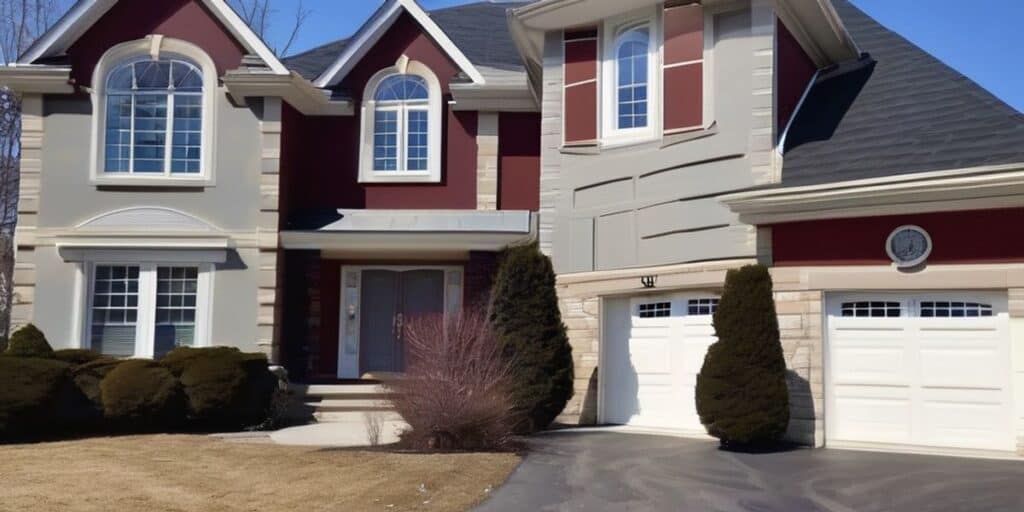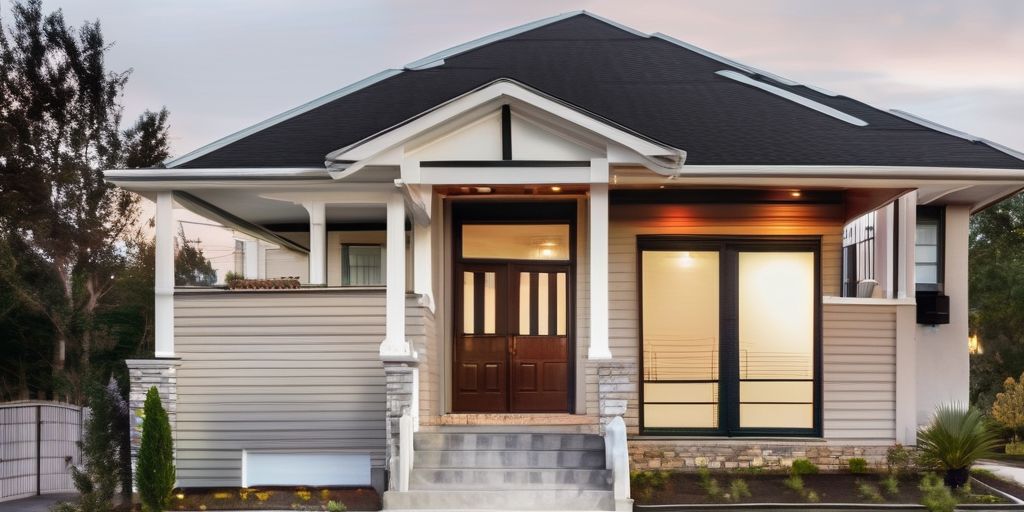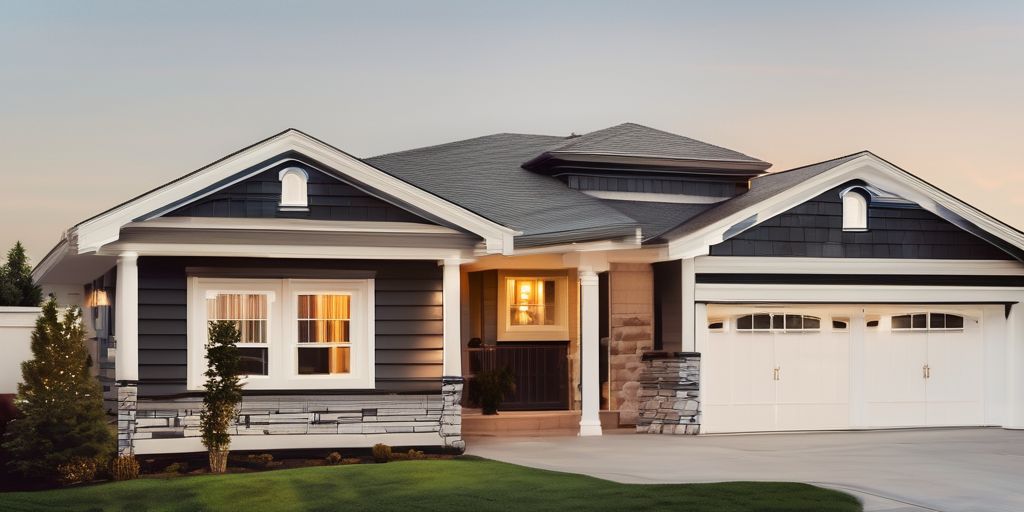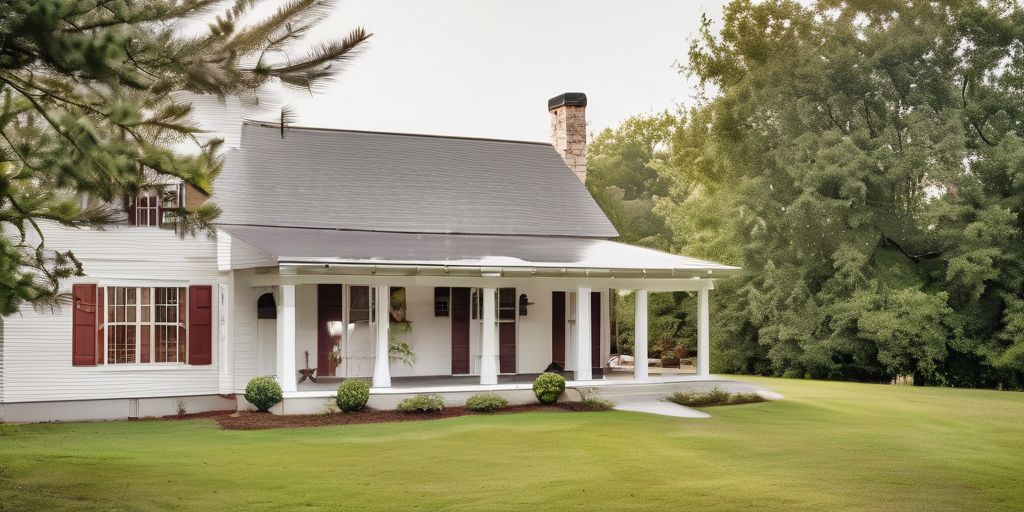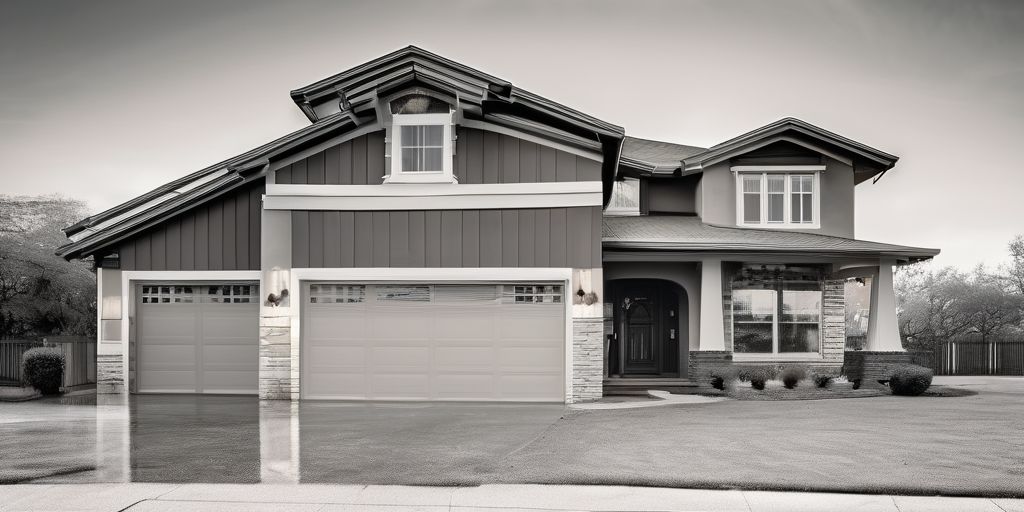The meticulous process of exterior spray painting in Oakville requires not only the right choice of paint but also precision in masking to ensure a clean, professional finish. This article delves into the art of masking, paint selection, surface preparation, and post-painting care, providing homeowners and professionals alike with comprehensive guidance for achieving exceptional results on their outdoor painting projects.
Key Takeaways
- Selecting the appropriate tape and materials is crucial for effective masking; products like 3M 1/2 Masking Tape are highly recommended for their reliability.
- Oakville offers a variety of multi-surface paints with waterproofing properties, ensuring durability and protection for both residential homes and industrial premises.
- Preparation is key; cleaning surfaces thoroughly and checking the weather forecast can significantly influence the success of an exterior painting job.
- Advanced strategies for masking complex surfaces involve precision, such as using fine-nozzle spray foam for cracks and employing techniques to navigate tricky edges.
- Post-painting cleanup is essential for maintaining the aesthetics of the newly painted exterior, which includes safe removal of masking materials and dealing with any paint spills.
Mastering the Art of Masking for Exterior Spray Painting
Choosing the Right Tape and Materials
When embarking on an exterior spray painting project, the selection of the right tape and materials is crucial for achieving a professional finish. Choosing the appropriate tape is not just about adhesion but also about the ease of removal and the quality of the paint lines it produces.
- Painter’s tape: Designed with easy-to-tear paper and a non-abrasive adhesive, it’s ideal for delicate surfaces and leaves sharp paint lines.
- Masking tape: A general-purpose tape that’s good for holding, bundling, and sealing, but may not be as precise as painter’s tape.
- Duct tape: Known for its strength and versatility, but not recommended for painting due to residue issues.
In addition to tape, other materials such as masking paper, plastic film, and canvas drop sheets are essential to protect various surfaces and prevent paint from splattering. It’s important to select materials that are suited to the specific textures and conditions of the outdoor space.
Remember, the quality of materials can significantly impact the final outcome of your painting project. Always opt for materials that will provide the best protection and results.
For those in the Oakville area, consider the local climate and environmental conditions when selecting your materials. The proximity to Lake Ontario may influence the type of materials best suited for the job due to humidity and potential weather changes.
Techniques for Effective Coverage
Achieving a uniform and precise coat during exterior spray painting requires a methodical approach. Proper masking is the cornerstone of sharp and clean lines, ensuring that paint only goes where it’s intended. Here are some techniques to enhance coverage effectiveness:
- Pre-cutting tape strips to the lengths needed for each section can save time and improve accuracy.
- Overlapping tape edges by a small margin can prevent paint from seeping through gaps.
- Pressing down the edges of the tape with a putty knife or similar tool can create a tighter seal.
- For larger areas, using drop cloths or plastic sheeting is essential to protect surfaces from overspray.
Remember, patience and attention to detail when masking can significantly impact the final appearance of your paint job.
When dealing with complex shapes or surfaces, consider creating a masking blueprint beforehand. This can help in visualizing the areas that need to be covered and can streamline the masking process. In Oakville, where the architectural styles can vary, this technique is particularly useful for ensuring that every unique feature is appropriately protected.
Protecting Surrounding Areas
When undertaking an exterior spray painting project, it’s crucial to ensure that the surrounding areas are well protected. Overspray can occur, and without proper precautions, it can lead to unwanted paint on nearby surfaces. Here are some steps to safeguard your environment:
- Lay tarpaulin or dust sheets on the ground to shield grass, decks, and flower borders from paint splatters.
- Use plastic sheeting to cover larger areas, such as patios or driveways, especially if they feature skid-resistant surfaces like brick pavers or gravel.
- For vertical surfaces or fixtures, such as glass walls or privacy screens, secure them with masking film or painter’s plastic.
Remember, the goal is to create a barrier between the paint and any surfaces you wish to keep clean. This not only preserves the appearance of your property but also minimizes cleanup efforts post-painting.
In areas like Oakville, where the aesthetic of one’s home is paramount, taking the time to compartmentalize grass or turf zones can make a significant difference. It’s about striking a balance between functionality and maintaining the visual appeal of your outdoor space.
The Ultimate Guide to Oakville’s Exterior Paint Selection
Exploring Multi-Surface Paints
When considering exterior spray painting, the choice of paint is crucial for both aesthetics and longevity. Multi-surface paints are designed to adhere to a variety of materials, offering flexibility and convenience for any project. These paints are typically formulated to be weather-resistant, ensuring that they can withstand the harsh elements without losing their vibrancy or protective qualities.
- Weather-resistant: Capable of withstanding various weather conditions without deteriorating.
- Versatile: Suitable for a range of surfaces, including wood, metal, and concrete.
- Long-lasting: Durable paints that maintain their finish over time.
It’s important to select a paint that not only looks good but also provides a protective barrier against the elements.
In Oakville, where the climate can vary, using a paint that can handle moisture and temperature fluctuations is essential. Whether you’re painting a quaint garden fence or a robust industrial facility, the right multi-surface paint can make all the difference.
Waterproofing Properties for Durability
Waterproofing your home’s exterior is not just about preventing water penetration; it’s about safeguarding the integrity and longevity of your property. Proper waterproofing is essential for maintaining the structural strength of wood and metal components, which are susceptible to damage from continuous water exposure. Unlike concrete, which is not damaged by water itself, these materials require protection to prevent weakening over time.
Moisture control plays a pivotal role in preserving your home’s foundation and overall stability. Without it, the foundation can be compromised, leading to a reduced lifespan of the property. Moreover, waterproofing helps in preventing the growth of moss and mold, and the infestation of wood-damaging insects like termites.
Ensuring your home is well-protected against moisture not only increases its lifespan but also its value. A robust waterproofing system can make your property more appealing to potential buyers, as it signifies a well-maintained and durable home.
While areas such as basements, bathrooms, kitchens, and roofs are particularly prone to moisture accumulation, it’s crucial to address these vulnerabilities early on. Whether you’re purchasing a new home or constructing one, prioritize a professional inspection and consider waterproofing as a vital part of your home maintenance plan.
Top Brands for Quality Coatings
When selecting paint for exterior spray painting, the quality of the coating is paramount. High-quality paints ensure longevity and durability, especially in the variable climate of Oakville. It’s essential to choose paints that are formulated to withstand the local weather conditions, from the humid summers to the frosty winters.
Consistency in the paint’s texture and color is also a critical factor. A uniform application can greatly enhance the aesthetic appeal of your property. Here are some key considerations when selecting a paint brand:
- Resistance to fading and chipping
- Ability to cover imperfections
- Eco-friendly options with low VOCs
Remember, the right paint can significantly impact the protection and appearance of your home’s exterior.
Lastly, while specific brand names are not mentioned, it is advisable to research and select a brand that has a proven track record of quality and reliability in the market.
Prepping Your Outdoor Space for Painting
Surface Cleaning and Preparation
Before applying a fresh coat of paint, it’s crucial to ensure that the surface is impeccably clean and free from any debris or old paint. Proper surface preparation is the key to a long-lasting and professional-looking paint job. Here’s how to get started:
- Begin by removing any loose paint or rust with a scraper or wire brush.
- Next, use a pressure washer to remove dirt, mildew, and any chalky residue. A simple pressure wash can be highly effective, as suggested by online tutorials.
Remember, a clean surface will allow the new paint to adhere better and result in a smoother finish.
- After washing, allow the surface to dry completely before proceeding with masking or painting.
- Inspect the surface for any cracks or holes and fill them with the appropriate caulk or filler.
By following these steps, you’ll create the ideal canvas for your exterior spray painting project in Oakville, ensuring that the finish is both beautiful and durable.
Weather Forecasting for Optimal Results
To ensure the best outcome for your exterior spray painting project, monitoring the weather forecast is crucial. Here are some tips to consider:
- Plan Ahead: Check the long-term weather forecast to choose the best time for your project. Aim for a stretch of dry, mild weather.
- Moisture Levels: Use a moisture meter to assess the dryness of your surfaces before beginning. Painting over damp surfaces can lead to poor adhesion and longevity.
- Temperature and Humidity: Paint adheres best at certain temperatures and humidity levels. Avoid painting on extremely hot or cold days, and when humidity is high.
- Wind Conditions: High winds can cause overspray and debris to stick to wet paint. Choose a calm day for painting.
Remember, the weather can change quickly. Be prepared to adjust your schedule if the forecast shifts.
Oakville’s Bronte Creek Provincial Park can be a great place to observe weather patterns due to its open spaces and natural environment. Keeping an eye on the local conditions can help you anticipate weather changes that might affect your painting schedule.
Securing Loose Items and Furniture
Before commencing an exterior spray painting project, it’s essential to secure loose items and furniture to ensure a safe and unobstructed workspace. Here’s how to prepare your outdoor space effectively:
- Start by removing any small, loose items from the area to be painted. This includes toys, potted plants, and decorative pieces.
- For larger furniture, either cover them with a drop cloth or relocate them to a safe distance from the painting zone.
- Ensure that all items that cannot be moved are adequately covered and protected from potential overspray.
Proper masking materials and color mixing are crucial for a successful paint project. Consider surface type, weather, and safety measures for best results.
- Secure any movable fixtures such as gates or shutters to prevent them from swinging or moving due to wind or during the painting process.
- If you have a fence, consider whether it needs to be masked or if sections should be temporarily removed for easier access.
Remember, a clean and organized space not only facilitates a smoother painting job but also minimizes the risk of accidents and ensures the safety of everyone involved.
Advanced Masking Strategies for Complex Surfaces
Navigating Tricky Edges and Corners
When it comes to masking tricky edges and corners for exterior spray painting, precision is key. Here are some steps to ensure clean lines and professional results:
- Start by thoroughly cleaning the edges and corners to remove any debris that might prevent the tape from adhering properly.
- Use a putty knife or a similar tool to press down the tape firmly, ensuring it’s well-sealed against the surface.
- For curved surfaces, consider using a flexible tape that can conform to the shape without creating wrinkles or gaps.
Remember, patience and attention to detail are crucial when working on complex surfaces. Take your time to apply the tape correctly, and you’ll be rewarded with a sharp, clean finish.
In areas with intricate designs or multiple angles, it may be helpful to cut smaller pieces of tape to better manage the coverage. Always overlap tape edges slightly to create a continuous barrier against paint bleed-through.
While Oakville’s historical buildings, like the Oakville Lighthouse, may not be your project, the same principles apply when masking any structure with a rich architectural heritage.
Masking Non-Traditional Shapes
When tackling the task of masking non-traditional shapes for exterior spray painting, precision is key. The challenge lies in covering every nook and cranny without leaving any exposed areas that could be marred by overspray. Here are some tips to ensure a clean and sharp finish:
- Use flexible materials: Materials like painter’s tape should be flexible enough to conform to curves and irregular surfaces.
- Create templates: For complex shapes, it’s helpful to create a paper or cardboard template that can be traced and cut out.
- Layering technique: Apply multiple layers of masking material, starting with the smallest areas first and gradually building up to the larger sections.
Remember, patience and attention to detail will yield the best results. It’s also important to consider the weather conditions, especially in areas like Oakville where sudden changes can affect the drying process.
While no specific landmarks are mentioned, it’s worth noting that the techniques described are applicable to various outdoor projects, including those near Oakville’s picturesque waterfront parks and historic downtown.
Ensuring Precision on Industrial Premises
When tackling exterior spray painting on industrial premises, precision is paramount. Careful planning and meticulous execution are the cornerstones of achieving a flawless finish. Here’s a concise guide to help ensure precision:
- Preparation: Start by thoroughly cleaning the surface to be painted. Remove any dirt, grease, or rust that could interfere with adhesion.
- Masking: Use high-quality masking materials to cover areas that should remain paint-free. Ensure edges are sealed tightly to prevent paint bleed.
- Application: Apply paint in even, controlled layers. Avoid over-spraying, which can lead to drips and uneven coverage.
- Inspection: After painting, inspect the work carefully. Look for any overspray or areas where the paint may have bled through the masking.
Remember, the key to precision lies in not rushing the process. Take your time to do it right.
In the context of Oakville, where industrial structures are often in proximity to natural landmarks like Bronte Creek, it’s crucial to maintain a clean and environmentally responsible work site. This includes proper disposal of masking materials and any paint waste to protect the local ecosystem.
Post-Painting Cleanup and Maintenance Tips
Removing Masking Materials Safely
After the exterior spray painting job is complete, the removal of masking materials is a critical step to ensure a clean finish. Carefully peel away the tape and protective coverings to avoid damaging the fresh paint. Here are some tips for a safe and effective cleanup process:
- Start by gently pulling the tape back over itself at a 45-degree angle. This technique helps minimize the risk of paint peeling.
- For stubborn tape residue, dampen the area with warm water and allow it to sit for a few minutes before attempting to remove it.
- Use a plastic putty knife or a credit card edge to lift any remaining adhesive without scratching the surface.
Remember, patience is key. Rushing the removal process can result in damage to the new paint job or the underlying surface.
In the event of paint spills or drips on unintended surfaces, act quickly to clean them up. Absorbent materials like sawdust or cat litter can be effective in picking up wet paint. For dried paint, a gentle scraping followed by wiping with a damp cloth can do the trick. Always dispose of waste materials responsibly, keeping the environment in mind.
Cleaning Up Paint Spills and Splatters
After a day of painting, it’s not uncommon to find a few rogue splatters or spills. Prompt action is key to ensuring these accidents don’t become permanent blemishes. Here’s a simple guide to tackle unwanted paint marks:
- Baking Soda Solution: Effective for most hard surfaces.
- Vinegar and Water: A go-to for glass and mirrors.
- Rubbing Alcohol: Targets ink and marker stains.
- Hydrogen Peroxide: Addresses stubborn bathroom stains.
- Lemon and Salt: A natural remedy for rust and mildew.
Remember, the type of paint and surface will dictate the best cleaning approach. For water-based paints, soap and water can often do the trick, while oil-based paints may require a stronger solvent.
When dealing with paint spills, always test your cleaning solution on a small, inconspicuous area first to avoid any damage.
In Oakville, where the beauty of Lake Ontario’s shoreline is often mirrored in the well-kept exteriors of homes, maintaining that pristine look after a painting project is essential. By following these simple steps, you can ensure that your outdoor space remains as spotless as the scenic views.
Maintaining Your Newly Painted Exterior
After the final coat dries and the exterior painter has left, maintaining the vibrancy and longevity of your home’s new paint is crucial. Here are some friendly tips to keep your painted surfaces looking fresh:
- Regularly inspect your home’s exterior for signs of wear or damage. Catching issues early can prevent more extensive repairs later on.
- Gently clean painted surfaces to remove dirt and pollutants. A soft brush and mild detergent usually suffice.
- Touch up any small chips or cracks to protect against water infiltration and further damage.
Remember, consistent maintenance can significantly extend the life of your paint job and keep your home looking its best.
For those with vinyl siding, a guide to ensuring longevity of vinyl siding paint in Oakville includes selecting the right materials and techniques. It’s also wise to consider the seasonal challenges, such as winter weather paint protection, to keep your home’s exterior in top condition.
After completing your painting project, proper cleanup and maintenance are essential to keep your home looking its best. Visit our website for a comprehensive guide on post-painting care, including tips on how to protect your newly painted surfaces and extend their lifespan. Our expert advice ensures your home remains vibrant and well-maintained. Don’t let your hard work go to waste; click through to our maintenance tips page now and keep your paint job pristine!
Conclusion
In conclusion, precise exterior spray painting and masking in Oakville can transform the look of any property, from residential homes to large industrial premises. With the right tools, such as the 3M 1/2 Masking Tape and the Graco Fusion Air Purge gun, and a careful selection of high-quality paints with waterproofing properties, any DIY project can achieve professional results. Remember to protect your surroundings with tarpaulin and to inspect all areas for cracks and holes before beginning. Whether you’re updating your garden fence or giving your shed a new lease on life, Oakville offers a variety of resources to ensure your painting project is a success. So grab your brushes, choose a dry day, and get ready to bring a fresh splash of color to your outdoor space!
Frequently Asked Questions
What type of masking tape is best for exterior spray painting in Oakville?
The 3M 1/2 Masking Tape is highly recommended for exterior spray painting in Oakville due to its strong adhesion and clean removal, which is ideal for various surfaces and weather conditions.
Are there any local Oakville brands that offer quality exterior paints?
Yes, brands like Promain offer a selection of high-quality exterior paints and coatings suitable for various surfaces, including industrial premises, with excellent waterproofing properties.
How should I prepare my outdoor space before painting?
Preparation involves cleaning the surface, checking the weather forecast for dry conditions, and securing loose items and furniture. Also, consider protecting grass and garden decking with tarpaulin or dust sheets.
What should I do to ensure precise masking on complex surfaces?
For complex surfaces, use fine nozzle spray foam for filling cracks and seams, and consider using plasterboard or plywood to create a smooth surface before painting. Always inspect areas around windows thoroughly.
How can I safely remove masking materials after painting?
To remove masking materials safely, wait until the paint is fully dry and then gently peel off the tape at a 45-degree angle to avoid damaging the fresh paint. Use a putty knife if necessary to lift the tape.
What maintenance tips should I follow after painting my exterior?
Post-painting maintenance includes cleaning up any paint spills immediately, inspecting the painted surface regularly for any signs of wear or damage, and touching up areas as needed to maintain the finish.

